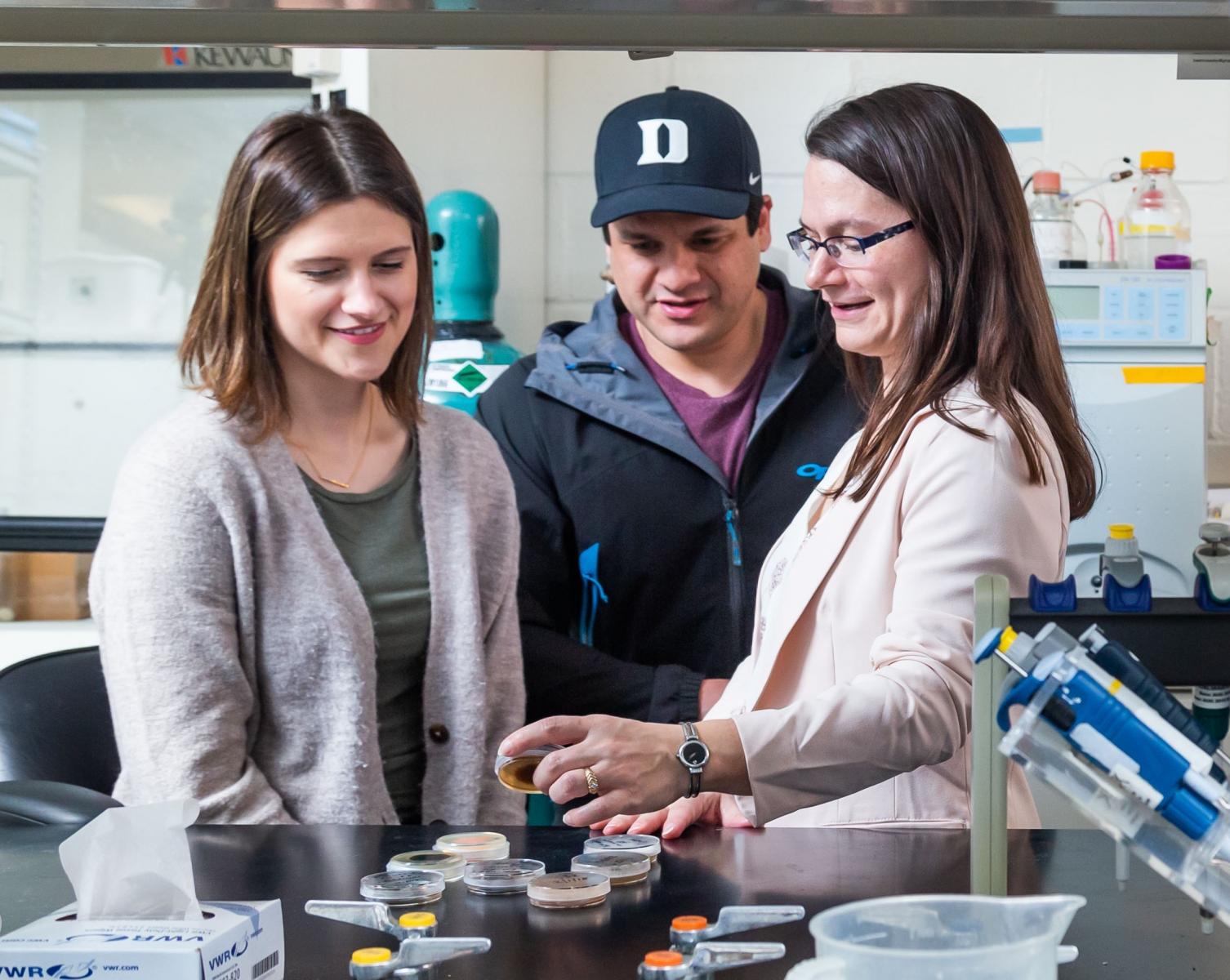You are here
Re-Engineering the Consumer Product Life Cycle
Duke civil and environmental engineers are working to make raw materials more sustainable and reimagining how we deal with harmful waste

The endless production and disposal of consumer electronics has an oversized impact on the environment. Take for example just one of a smartphone’s many components: the touch-sensitive glass, which is doped with rare earth elements.
Most of those rare earth elements come from Chinese mines. To get at them, vast swaths of topsoil are stripped from the earth, and chemicals are used to leach them out. Those chemicals are either pumped directly into the earth or held in ponds that are prone to leakage and spillage.
“It’s intense, what mining rare earth elements does to landscapes and to water resources,” said Duke professor of civil and environmental engineering Heileen Hsu-Kim.
Hsu-Kim knows another way to collect those materials—one that’s inextricably linked with another troubling environmental pollutant: coal ash.
 Often, the strategies used to remediate abandoned industrial sites are intensive and expensive. To clean contaminated soils and sediments around abandoned industrial sites, they’re frequently dredged and the toxic waste disposed of elsewhere, or capped. But Duke civil and environmental engineering professor Claudia Gunsch is battling toxic pollutants with the help of some unlikely allies. She studies naturally existing microbial communities in soil, water and sediment—microbes that can break toxic pollutants down rendering them harmless.
Often, the strategies used to remediate abandoned industrial sites are intensive and expensive. To clean contaminated soils and sediments around abandoned industrial sites, they’re frequently dredged and the toxic waste disposed of elsewhere, or capped. But Duke civil and environmental engineering professor Claudia Gunsch is battling toxic pollutants with the help of some unlikely allies. She studies naturally existing microbial communities in soil, water and sediment—microbes that can break toxic pollutants down rendering them harmless.
But of the multitudes of microbes out there, how exactly does she identify and select the right communities for the job?
Read more about these and other researchers working for a more sustainable future >>
